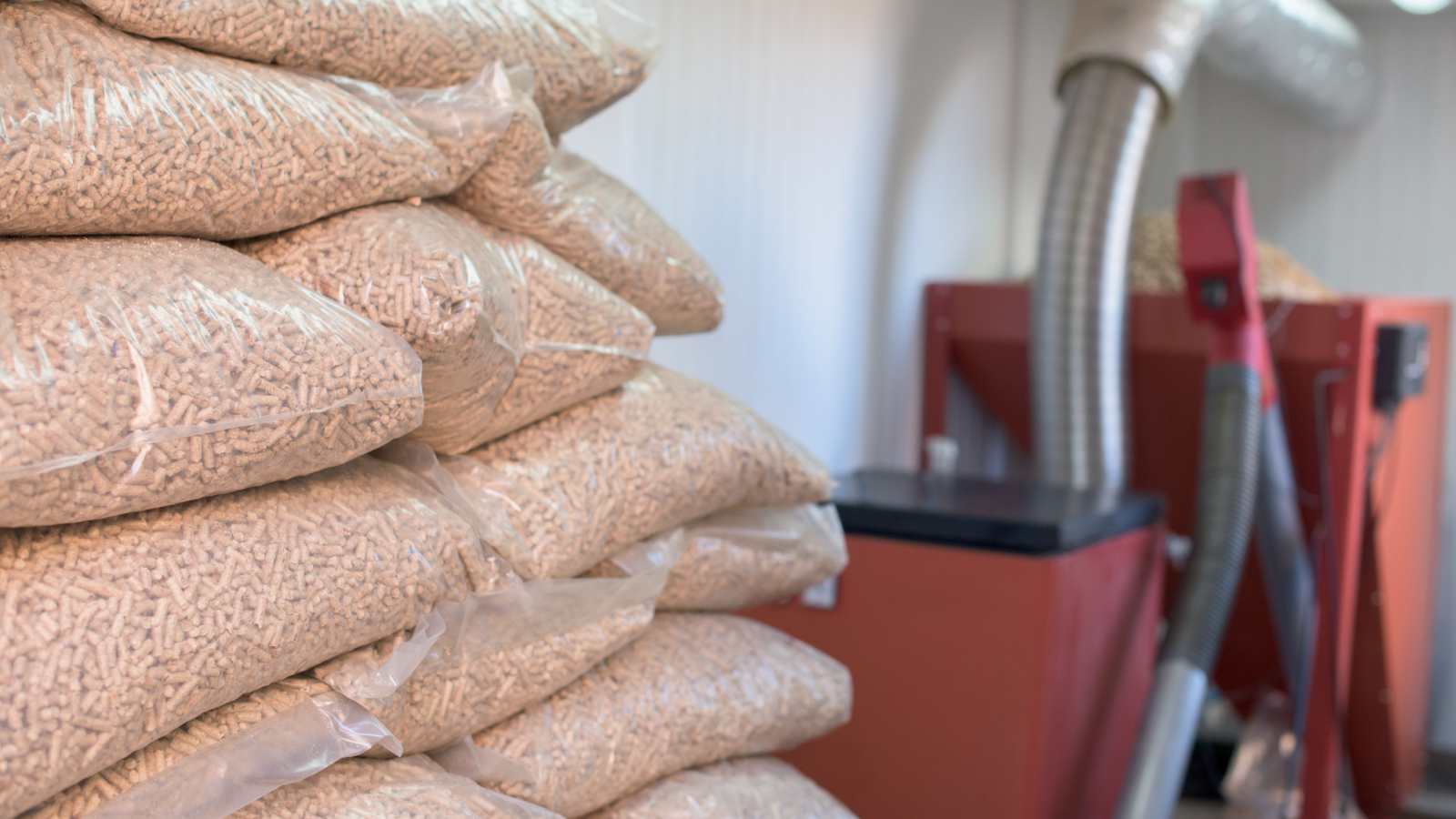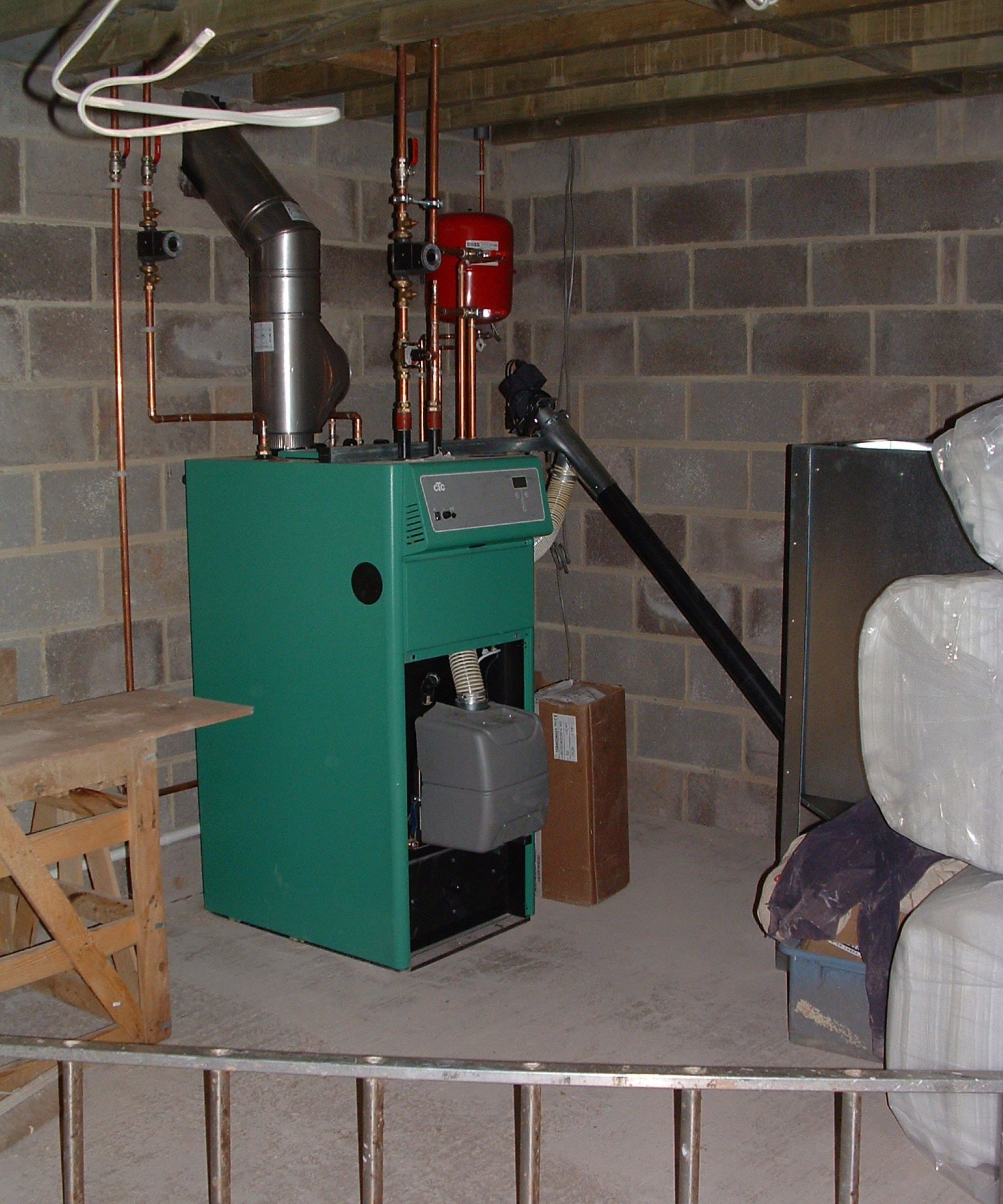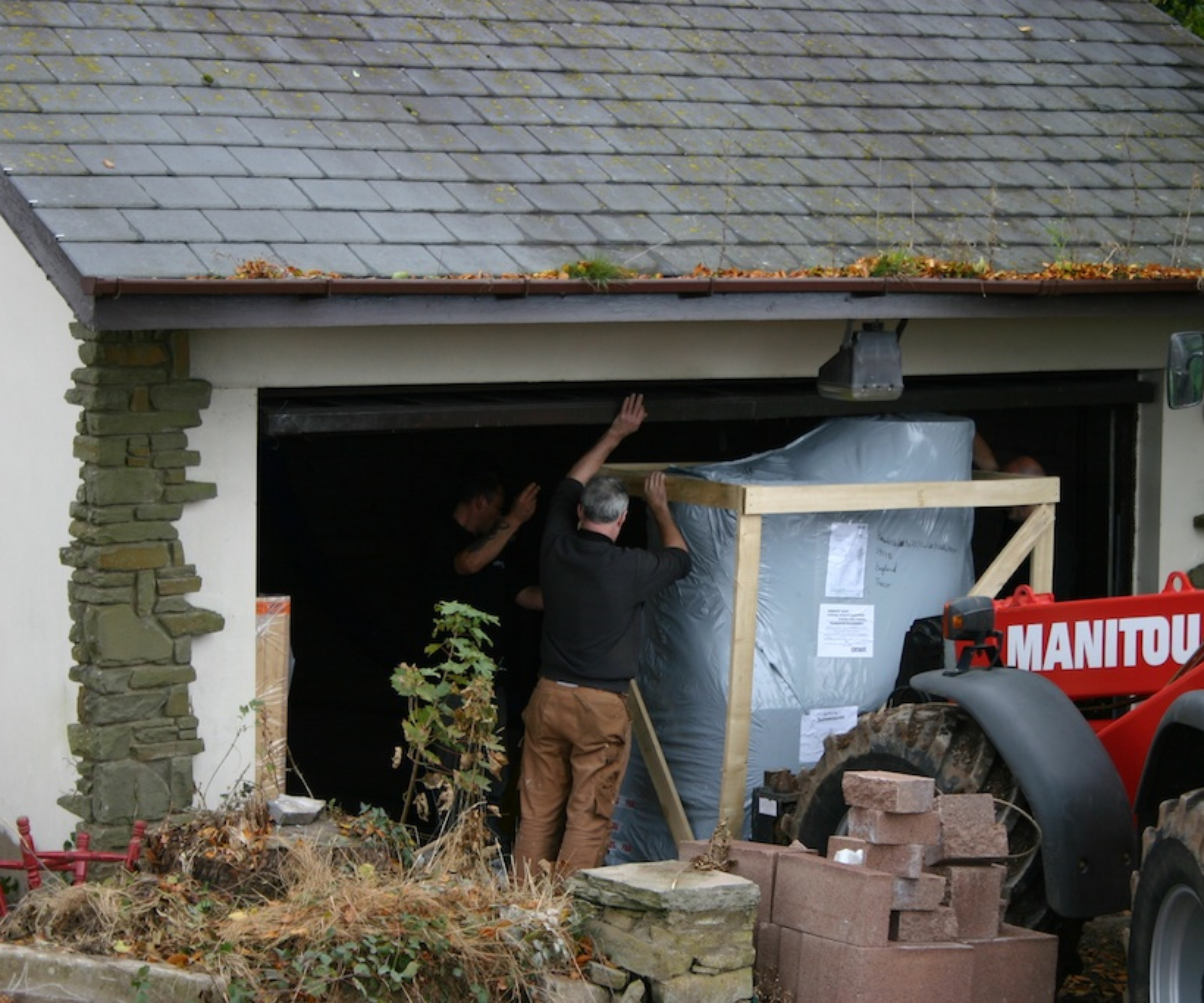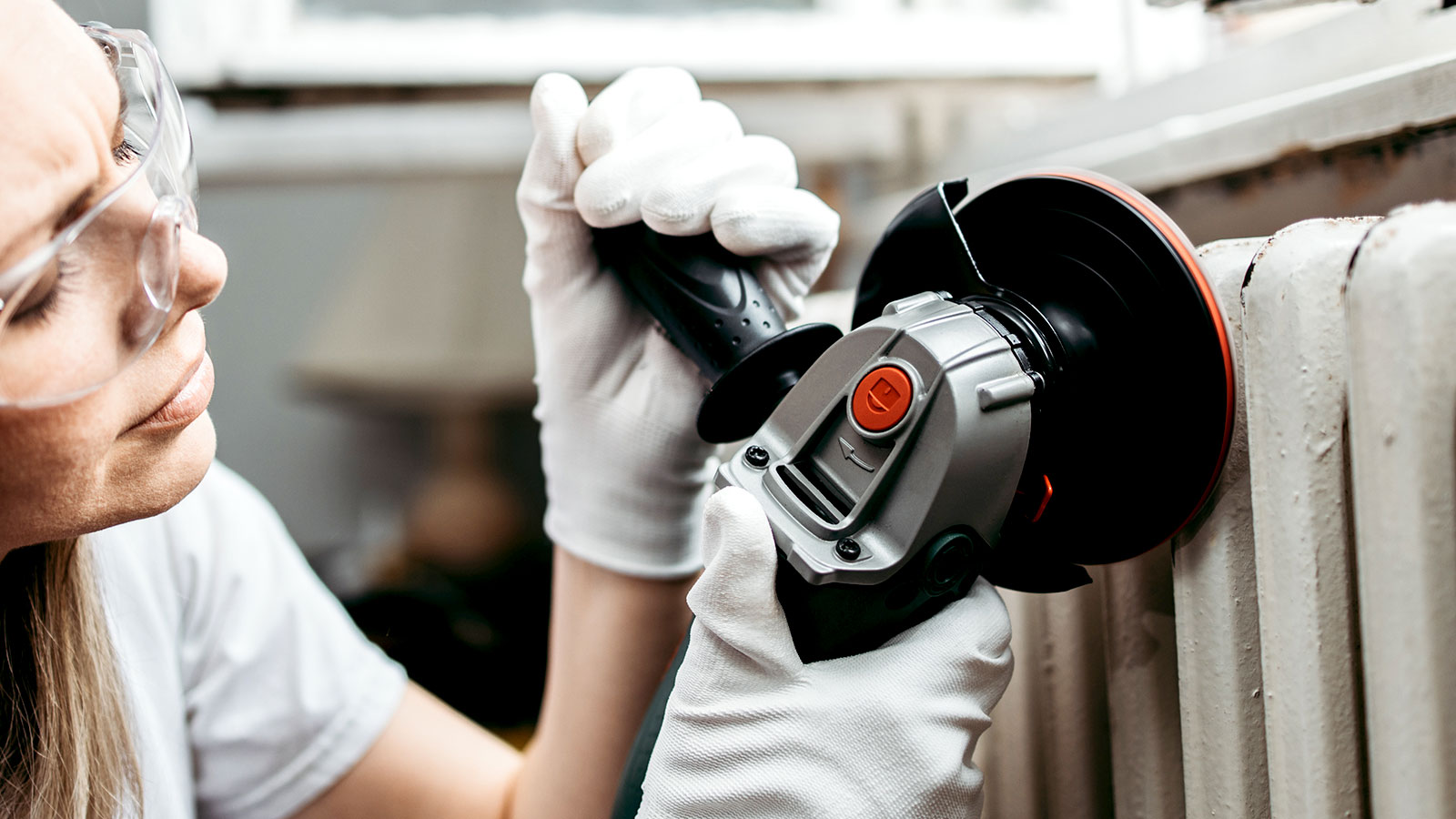What it's like to live with a biomass boiler — the regular tasks and reality of using biomass to heat your home
I installed and used a biomass boiler for around five years, and learning how to manage it was a fairly steep learning curve. Here's what I discovered about living with biomass

Even though it's considered a sustainable alternative to fossil fuels, biomass is still not one of the most common forms of domestic heating systems, which is why I'm often asked – 'what's it like to live with a biomass boiler?'
In short, it's a little like living with an older teenager. On the whole, consistent and well-behaved. On occasion, prone to temperamental outbursts and capable of switching off at a moment's notice if you're not paying attention to it.
That said, with time, patience and an understanding of how it works, achieving a warm and toasty home with your biomass boiler is certainly possible. Here's the low-down on what it's like to live with a biomass boiler so that you can start your journey a little more prepared than I did.
Why problems aren't always down to the biomass system
Although there a number of things I wish I'd known before installing a biomass boiler, when I think about what it was like living with a biomass boiler, it's easy to immediately think about the problems I encountered.
But, when you disect them, they weren't always necessarily the fault of the biomass system. Some were the result of lack of knowledge on how the system worked, human error about how to use it correctly, and also some design flaws in the plumbing and heating set up that meant we often asked too much of the biomass system.
But, overall, as with any technology in your home, whether it's a new home security system or smart lighting, once you learn how to use it correctly, it becomes more manageable and you can go for weeks or months without an issue.

Daily life with a biomass
In terms of day to day life with a biomass boiler, as with most heating systems, it was set up to run via a programmable timer so that hot water and heat could be distributed, as and when needed.
Bring your dream home to life with expert advice, how to guides and design inspiration. Sign up for our newsletter and get two free tickets to a Homebuilding & Renovating Show near you.
Underfloor heating in the new wrap around extension was controlled via a series of zoned thermostats set to the required temperatures. Radiators in the listed building worked in a similar way, with individual thermostatic valves on each radiator, plus zoned thermostats to help maintain a standard temperature on different floors.
Unlike a combi boiler which provides heat on demand, in order to generate sufficient heat ready for use, the biomass boiler was operated via a separate timer.
Biomass works by burning fuel (wood pellets, chips or logs) and stores the subsequent energy in a thermal store, ready to be used as and when required.
This meant that overnight, while the heating in the the house was dormant, the biomass boiler was busy working away to store up enough heat to use the next day.
On a day to day basis, as my system used wood pellets that automatically fed into the boiler, this was pretty self-sufficient – unless of course the heating or hot water failed to warm up, in which case it would then be necessary to venture outside to the plant room and investigate why.
The most common cause for failure? Pellets being blocked in the auger that fed them from hopper to boiler. The fixes were usually quite simple and ranged from the more technical tasks such as resetting the boiler, to cleaning out sections of the boiler and hopper, and even included the perhaps questionable, and probably not recommended, DIY technique of giving the pipe a good shake and bang with a brush.

Weekly to monthly tasks
While daily tasks were light in number, there can be a number of more regular jobs required of you with a biomass system. Fail to do them and they could certainly lead to avoidable biomass problems and ultimately disruption to your heating and hot water supply.
- Checking fuel supply: although the hopper attached to the biomass boiler could store 5 tons of wood pellets, during the winter this could drop fairly quickly during cold snaps. Large blown-in pellet deliveries couldn't always be arranged at the last minute, meaning it was essential to stay on top of supply levels. There are also ways of adding an automated system to the hopper so that your regular supplier is notified when levels are low. However, I didn't have this so had to ensure I checked how full the hopper was on a minimum of a fortnightly basis during the winter.
- Cleaning out the ash: During the summer months when the biomass was only heating hot water, this task was needed less often. But, during the winter, I would check the ash container once a week and empty it. Leaving it to overflow would cause an automatic boiler switch off which was best avoided. It was also a good opportunity to check for pellet blockages.
- Managing dust levels: Even though the wood pellets were stored in an enclosed hopper and burnt inside the biomass, wood dust is an inevitable part of a biomass system – particularly after a wood pellet delivery. I would regularly wipe down the outside of the biomass boiler and brush the boiler room floor to try and keep on top of the dust build up. Again, as with cleaning the ash, this wouldn't be as necessary during warmer months.

Overall experience
Although I've yet to live in a property powered by a heat pump, so I can't compare living with biomass vs heat pumps, I have had both gas and another off-grid heating option in the form of LPG, giving me something against which to benchmark what it's like to live with a biomass boiler.
There's no denying that using gas is probably the easiest system to run and operate, closely followed by LPG. I learnt from my biomass mistakes and had an automated system installed on the LPG tank which meant the supplier was notified when levels were dropping, as opposed to the responsibility relying with me.
Biomass on the other hand required manual work, some of which I underestimated. That said, the property was in a fairly rural location making life in general different to living in a suburban environment. The more physical elements of managing biomass were in hindsight no different to having additional gardens to maintain and outbuildings to manage.
Were we always warm with a biomass boiler? On the whole yes, but there were certainly teething problems getting the system to provide enough heat for radiators in an old building, and not too much heat to the underfloor heating in a well insulated extension.
This coupled with dealing with hot water demands meant it was hard to get the balance right. But, was this an issue with the biomass? Not really. It could service either section of the home perfectly well and eventually both together, once I understood how to manage the demand more efficiently.
Cost wise, the system used more pellets than envisaged during the colder months, and more than had been estimated. Likewise, getting pellet deliveries was sometimes difficult. There was a lack of suppliers nearby meaning I sometimes had to pay a premium to get them . But, over time, this balanced out. And, in the end, I made the decision during the summer months to switch off the boiler and instead use the immersion heater for hot water. Electricity at the time was less expensive and this proved a good solution, although may not be quite as effective with current energy prices.
Would I choose biomass again if I undertook another self build project? In the right setting, I'd consider it, but I think the appeal of being able to use the air to heat my home, means I'd opt for an air to air, or air to water heat pump next time, along with adopting strong Passivhaus principles to ensure as little heat as possible was needed.
For me, eco-credentials and sustainability would be at the forefront of any new home, making biomass a contender, but not as strong as the other options available such as solar panels and heat pumps.

Sarah is Homebuilding & Renovating’s Assistant Editor and joined the team in 2024. An established homes and interiors writer, Sarah has renovated and extended a number of properties, including a listing building and renovation project that featured on Grand Designs. Although she said she would never buy a listed property again, she has recently purchased a Grade II listed apartment. As it had already been professionally renovated, she has instead set her sights on tackling some changes to improve the building’s energy efficiency, as well as adding some personal touches to the interior.
